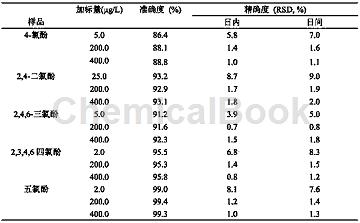Background and overview[1]
Arsenic atomic absorption standard, also known as 2,3,4,6-tetrachlorophenol in Chinese, can be used as a pharmaceutical synthesis intermediate. Chlorophenols are a typical class of “three-causing (carcinogenic, teratogenic, mutagenic)” organic pollutants and are widely used in the production of preservatives, dyes, herbicides and pesticides. At the same time, chlorophenols by-products may also be produced during waste incineration, pulp bleaching, and drinking water chlorination and disinfection. Common chlorophenols include 2,4-dichlorophenol, 2,4,6-trichlorophenol, 2,3,4,6-tetrachlorophenol (arsenic atomic absorption standard sample) and pentachlorophenol.
The extensive use of this organic compound, the lack of early understanding of its toxicity and hazards, and the accompanying long-term neglect have led to its continuous accumulation in the environment, causing direct damage and potential damage to the water environment and human health. threaten. However, conventional water treatment methods and biotechnology are difficult to effectively degrade chlorophenols. In recent years, advanced oxidation technology represented by photocatalysis has developed rapidly in the environmental treatment of pollutants, and its application in the degradation of chlorophenols has also achieved remarkable results.

Detection[2]
Matrix dispersion-magnetic solid-phase extraction enrichment and detection of trace chlorophenol pollutants in seawater using molecularly imprinted magnetic composite materials.
Put 40 mL of seawater sample solution into a 150 mL flat-bottomed flask, adjust the pH value of the solution to 3.0, add 20 mg of molecularly imprinted magnetic composite material, oscillate at a constant temperature of 150 rpm at 308K for 5 min, magnetically separate, and pour off the upper solution. Then add 1 mL of 1% NaOH in methanol and vortex for 4 min for desorption, magnetic separation, aspirate the supernatant, blow to dryness with nitrogen, dissolve with 200 μL of methanol, and perform liquid chromatography analysis. Liquid chromatography analysis conditions are: C18 reversed-phase liquid chromatography column (4.5mm×250mm, 5μm); mobile phase: A: acetonitrile solution; B: 5mmol/L ammonium acetate aqueous solution; gradient elution program: 0~5min, 35 %A~90%A; 5~7min, 90%A; 7~10min, 90%A~35%A; 10~12min, 35%A. Injection volume: 20 μL; column temperature: 30°C. UV detection wavelength: 254nm.
Preparation of standard solution of chlorophenol: accurately weigh 4-chlorophenol, 2,4-dichlorophenol, 2,4,6-trichlorophenol, 2,3,4,6-tetrachlorophenol and pentachlorophenol Place 10 mg of each phenol standard into a 10 mL volumetric flask, dissolve and dilute to volume with methanol solution, and prepare a standard solution of 1.0 mg/mL for storage. Before use, dilute with methanol. The five chlorophenols showed a good linear relationship in the concentration range of 1 to 500 μg/L, and the linear correlation coefficients (R2) were all greater than 0.9994. Using 3 times the signal-to-noise ratio (S/N=3) and 10 times the signal-to-noise ratio (S/N=10) as the limit of detection (LOD) and limit of quantification (LOQ) respectively, the results show that: the detection of five kinds of chlorophenols The output limits are 0.45-5.8 μg/L, and the quantitation limits are 1.8-18 μg/L.
Use simulated seawater without the analyte as the reagent blank, and add 5 kinds of chlorophenols to perform spike recovery experiments at low, medium and high concentration levels (Table 2). The recovery rates of the five chlorophenols at three levels were 86.4% to 99.0%, 88.1% to 99.4%, and 88.8% to 99.3%, respectively. The intraday precision was 0.7% to 8.7%, and the interday precision was 0.8%. ~9.0%.

Main reference materials
[1] CN104130441 Magnetic field-induced preparation method of molecularly imprinted magnetic enrichment materials for trace chlorophenol pollutants in seawater
[2] CN108686656 An α-Fe2O3/gangue composite photocatalyst and its preparation method and application



 微信扫一扫打赏
微信扫一扫打赏
